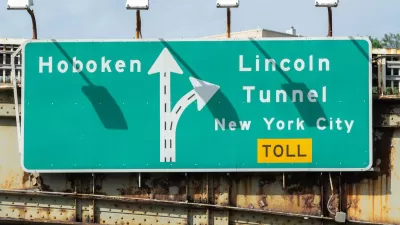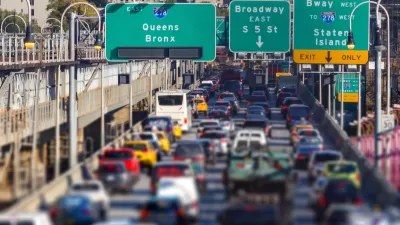Transportation investment is struggling to keep pace with population growth.

The Columbus Dispatch reports on "modest gains" over the past few years in tackling congestion and promoting sustainable transportation options in Central Ohio. Patrick Cooley explains that while there was a dip in the percentage of commuters who drive, that small achievement was offset by a growth in the overall number of commuters driving.
The Mid-Ohio Regional Planning Commission, using census data, found that the proportion of Franklin County commuters who drive alone to work fell to 81.2 percent, from 81.7 percent, between 2007 and 2016. It's a small decrease, but it reversed an upward trend. However, the total number of people driving alone to work actually increased in that time, to 503,180 from 463,043.
Some of the share of drivers went to public transit ridership, through programs like free bus passes for employees of Downtown businesses and more than doubling the number of high-frequency lines, among other initiatives. Some also went to cycling, with the addition of bike lanes on major streets. But both options are still difficult to access outside of urban cores, Cooley reports.
FULL STORY: Little progress in cutting central Ohio congestion

Planetizen Federal Action Tracker
A weekly monitor of how Trump’s orders and actions are impacting planners and planning in America.

Maui's Vacation Rental Debate Turns Ugly
Verbal attacks, misinformation campaigns and fistfights plague a high-stakes debate to convert thousands of vacation rentals into long-term housing.

Restaurant Patios Were a Pandemic Win — Why Were They so Hard to Keep?
Social distancing requirements and changes in travel patterns prompted cities to pilot new uses for street and sidewalk space. Then it got complicated.

In California Battle of Housing vs. Environment, Housing Just Won
A new state law significantly limits the power of CEQA, an environmental review law that served as a powerful tool for blocking new development.

Boulder Eliminates Parking Minimums Citywide
Officials estimate the cost of building a single underground parking space at up to $100,000.

Orange County, Florida Adopts Largest US “Sprawl Repair” Code
The ‘Orange Code’ seeks to rectify decades of sprawl-inducing, car-oriented development.
Urban Design for Planners 1: Software Tools
This six-course series explores essential urban design concepts using open source software and equips planners with the tools they need to participate fully in the urban design process.
Planning for Universal Design
Learn the tools for implementing Universal Design in planning regulations.
Heyer Gruel & Associates PA
JM Goldson LLC
Custer County Colorado
City of Camden Redevelopment Agency
City of Astoria
Transportation Research & Education Center (TREC) at Portland State University
Jefferson Parish Government
Camden Redevelopment Agency
City of Claremont





























